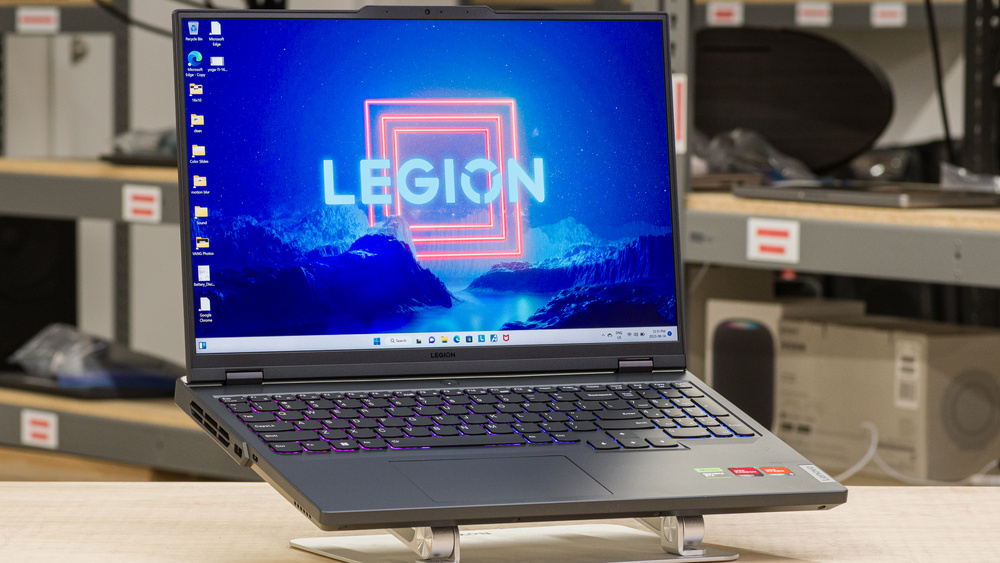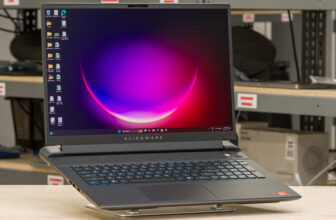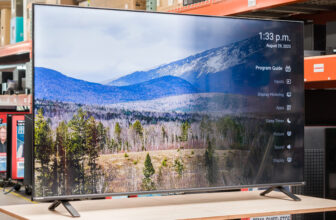
The Lenovo Legion Pro 5 is available with the following GPUs:
- NVIDIA GeForce RTX 4050 Laptop 6GB GDDR6 (140W TGP with Dynamic Boost)
- NVIDIA GeForce RTX 4060 Laptop 8GB GDDR6 (140W TGP with Dynamic Boost)
- NVIDIA GeForce RTX 4070 Laptop 8GB GDDR6 (140W TGP with Dynamic Boost)
The NVIDIA RTX 40-series GPUs aren’t a significant upgrade over the 30-series. The most notable addition is a feature called Frame Generation, which uses AI to insert artificially generated frames, resulting in higher frame rates and smoother gameplay in supported games. The RTX 4070 is the fastest and can run games at the display’s native QHD+ without many issues; however, you might be unable to max out the graphical settings in the most demanding titles. The RTX 4060 is roughly 20% slower than the 4070; it can handle games at 1440p, but you’ll have to lower the settings further to get over 60 fps. The RTX 4050 is mainly a 1080p gaming GPU that can run some games at 1440p. Its 6GB of VRAM is the main limitation, as it isn’t enough for demanding games at the QHD resolution. The lack of VRAM will result in stutters and texture pop-ins, meaning some elements take longer to load and seem to appear out of nowhere. You might even experience pop-ins on the RTX 4060 and 4070 in extremely VRAM-heavy games.
This laptop has a MUX (multiplexer) switch, a feature that allows the GPU to send information directly to the display without going through the integrated GPU. This means you’ll see better performance than laptops without this feature. The performance difference can be anywhere from 10% to 25%, or more in some cases. There’s also support for NVIDIA Advanced Optimus, which will automatically switch between the integrated graphics and discrete GPU depending on the workload without needing a system reboot or setting change in the BIOS.






